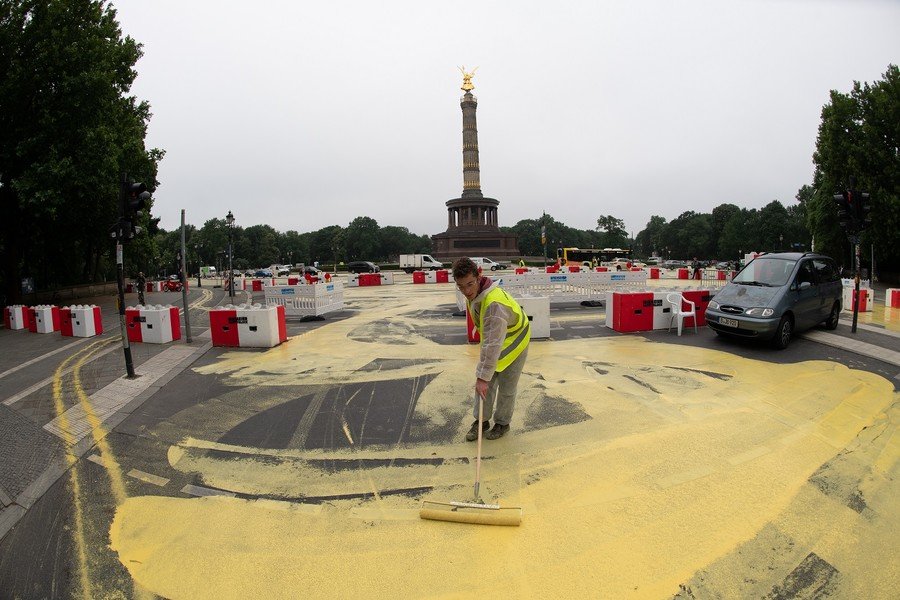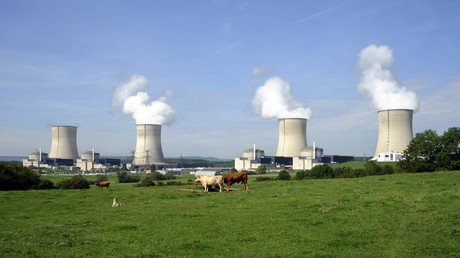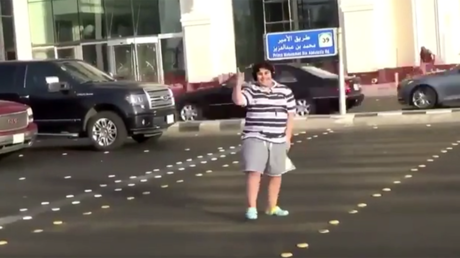‘No carte blanche’: Police target Greenpeace offices & flats over controversial Berlin paint stunt
German police descended on as many as 29 flats and offices of Greenpeace activists in response to the group’s offbeat July stunt that saw tons yellow paint being poured on a busy roundabout in the German capital.
Back in July, Greenpeace activists distributed 3,500 liters of “environment-friendly” paint on a busy Berlin road to protest the use of coal. Apart from a doubtful rationale behind the action, the stunt had almost brought the traffic on the five-exit junction to a halt around one of the most famous Berlin’s landmarks – the Victory Column.

The slippery yellowish sea turned into a driver’s nightmare and resulted in several traffic incidents, police reported. A cyclist and a motorcyclist fell off of their bikes, and a total of thirty-two complaints were filed with the law enforcement, including for property damage. Aside from the traffic chaos, it has cost the city a hefty sum to clean the mess – over 14,000 euros.
The Berlin public prosecutor’s office stated on Wednesday that Greenpeace activists were investigated for “dangerously interfering with the traffic,” and endangering the lives of the drivers who involuntary got caught up in the action.
During the all-out raids, investigators flagged 19 people behind the July action. Police will now comb through the data on the computers and flash drives seized during the raids to identify the remaining suspects.
There are a couple of signs that Greenpeace was seriously taken on notice by German authorities. For instance, the investigation into the July performance has been led by Berlin’s criminal investigations division, which is in charge of probing major offenses. In addition, the sweeping searches have not been restricted to the German capital and were conducted all across the country.
The police actions sparked angry response from the environmental activists, who called the searches an attempt “to suppress … peaceful protests.” The were also backed by the German Left Party, which said the searches are "interference with the freedom of expression.”
However, the move recieved quite a support by the right-wing Alternative for Germany party (AfD) and has been given a thumbs-up by the ruling Christian Democrats (CDU).
“Those who put people in danger and damage public property must be severely punished,” AfD’s spokesman in Berlin, Frank Scholtysek said, as cited by the Berliner Morgenpost.
Christian Democrats’ Berlin branch, for their part, tweeted that “no carte blanche should be given to questionable actions by environmental activists.” While the yellow paint stunt caused so much outrage, it is not entirely new. In 2015, a similar Greenpeace action saw the pavement the Arc de Triomphe in the Paris covered with yellow paint. Previous set-ups were also met with little praise.
ACTION @fhollande pour sauver le climat, renouvelons l'énergie ! Il faut 100% d'ENR avant 2050 #100RE4all#solairepic.twitter.com/sA8mmc7fTU
— Greenpeace France (@greenpeacefr) December 11, 2015
Back in 2014, Greenpeace "damaged" a UN World Heritage site – the Nazca lines – by unfurling a giant banner that read “Time for Change. The Future is Renewable.” The activists had set it up next to the hummingbird-shaped formation, angering the population and prompting the Peruvian government to press charges against the environmental group.
If you like this story, share it with a friend!















